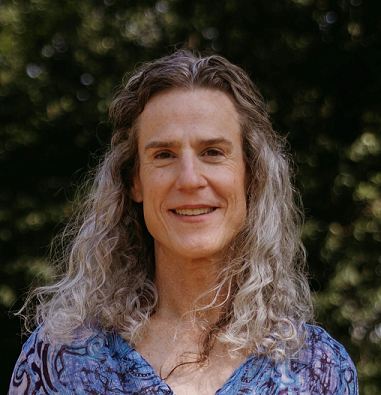Stakeholder Group

J Hughes, PhD
Associate Professor
Planning, Geography, and Environmental Studies
Abbotsford campus, A406b
Phone: 604-504-7441 ext. 4773
email JBiography
My training in natural sciences began with undergraduate work at the University of the South (Sewanee, Tennessee; BS, 1989) in Forestry and Geology. I continued with research and teaching in Botany at the University of Wyoming (MS 1995), where I investigated a natural hybrid zone using field mapping, morphology, and genetics.
For my PhD in Biological Sciences at Simon Fraser University (2002), I used vascular plant ecology and pollen of tidal-marsh sediments to quantify relative sea-level change from the 1700 Cascadia earthquake.
Following my PhD I joined the US Geological Survey at the University of Washington as a Mendenhall Postdoctoral Fellow. During my tenure there I used peat and lake-sediment stratigraphy, plant fossils, and tree-ring measures to document earth-quake-induced hydroseral succession in earthquake-formed lakes and wetlands.
Education
- PhD, Simon Fraser University, 2002
- MS, University of Wyoming, 1995
- BS, University of the South, 1989
Memberships
Professional Memberships
- Canadian Association of Geographers
- American Association of Geographers
- Tree-Ring Society
Teaching Interests
- GEOG 102: Evolution of the Earth's Surface
- GEOG 315: Soil Process and Function
- GEOG 317: Biogeography
- GEOG 400 (IS): Dendrochronology
- GEOG 410: Plant Ecology
- GEOG 417: Wetlands Ecology
- GEOG 419: Paleoecology
Research Interests
Most of my research has focused on wetland environments as recorders of late Holocene earthquakes in Cascadia. To quantify hydrological change accompanying these earthquakes I use pollen and plant macrofossil assemblages preserved in wetland sediments. These fossil assemblages are calibrated to known environmental gradients, which enables detection of abrupt, hydrological change that may have accompanied the earthquakes.
Recently I began to use tree-ring measures from trees killed by earthquakes to determine earthquake chronology among different faults. In addition to paleoseismology, I am interested in wetland ecology, biogeochemistry, and restoration.
Cascadia paleoseismology
Paleoseismology is the study of ancient earthquakes. Most of my research has focused on wetland environments as recorders of late Holocene earthquakes in Cascadia. These anaerobic wetland environments altered by prehistoric tremblors record information about earthquake magnitude and age.
Repeat earthquakes leave repeat signatures within sediments. To document hydroseral succession (flood events) that result from past earthquakes, I use pollen and plant macrofossil assemblages preserved in wetland sediments as proxies for past plant communities.
Dendrochronology provides relative dating of earthquakes undifferentiated by radiocarbon ages. Coastal wet-lands of southern Puget Sound preserve upland forests that subsided into the intertidal in response to past surface-rupturing earthquakes about 1100 years ago.
Inherent, radio-carbon age-estimate errors prohibit our ability to discern whether these faults ruptured at the same time or within a few centuries of each other. Comparisons of tree-ring growth pat-terns may allow us to determine the relative timing of these earthquakes.
Publications
Representative publications
- Barnett, E.A., H. Kelsey, B. Sherrod, J. Hughes, E. Schermer, R. Haugerud, C. Weaver, E. Siedlecki, R. Blakely. 2007. Active faulting at the northeast margin of the Greater Puget Lowland: a trenching and wetland coring study of the Kendall fault scarp, Whatcom County, Northwest Washington. GSA Cordilleran Section, 103rd Annual Meeting (4–6 May 2007), Paper #121073.
- Barnett, E.A., H.M. Kelsey, B.L. Sherrod, R.J. Blakely, J.F. Hughes, E.R. Schermer, R.A. Haugerud, C.S. Weaver, and E. Siedlecki. 2006. Active faulting at the northeast margin of the greater Puget Lowland: a paleoseismic and magnetic-anomaly study of the Kendall scarp, Whatcom County, Northwest Washington. Eos Trans. AGU 87(52), Fall Meet. Suppl., Abstract S31A-0183.
- Hughes, J.F. 2005. Meters of Synchronous Holocene Slip on two strands of a fault in the western Puget Sound Lowland, Washington. Eos Trans. AGU 86(52), Fall Meet. Suppl., Abstract S51C-1020.
- Blakely, R.J., J.F. Hughes, B.L. Sherrod, and R.E. Wells. 2005. Hunting the saddle mountain fault zone in the Olympic Peninsula with airplane and canoe. Eos Trans. AGU 86(52), Fall Meet. Suppl., Abstract S51C-1021.
- Hughes, J.F. and R.W. Mathewes. 2003. A modern analogue for plant colonization of palaeotsunami sands in Cascadia, British Columbia, Canada. The Holocene 13: 877-886.
- Hughes, J.F., R.W. Mathewes, and J.J. Clague. 2002. Use of pollen and vascular plants to estimate coseismic subsidence at a tidal marsh near Tofino, British Columbia. Palaeogeography, Palaeoclimatology, Palaeoecology 185: 145-161.
